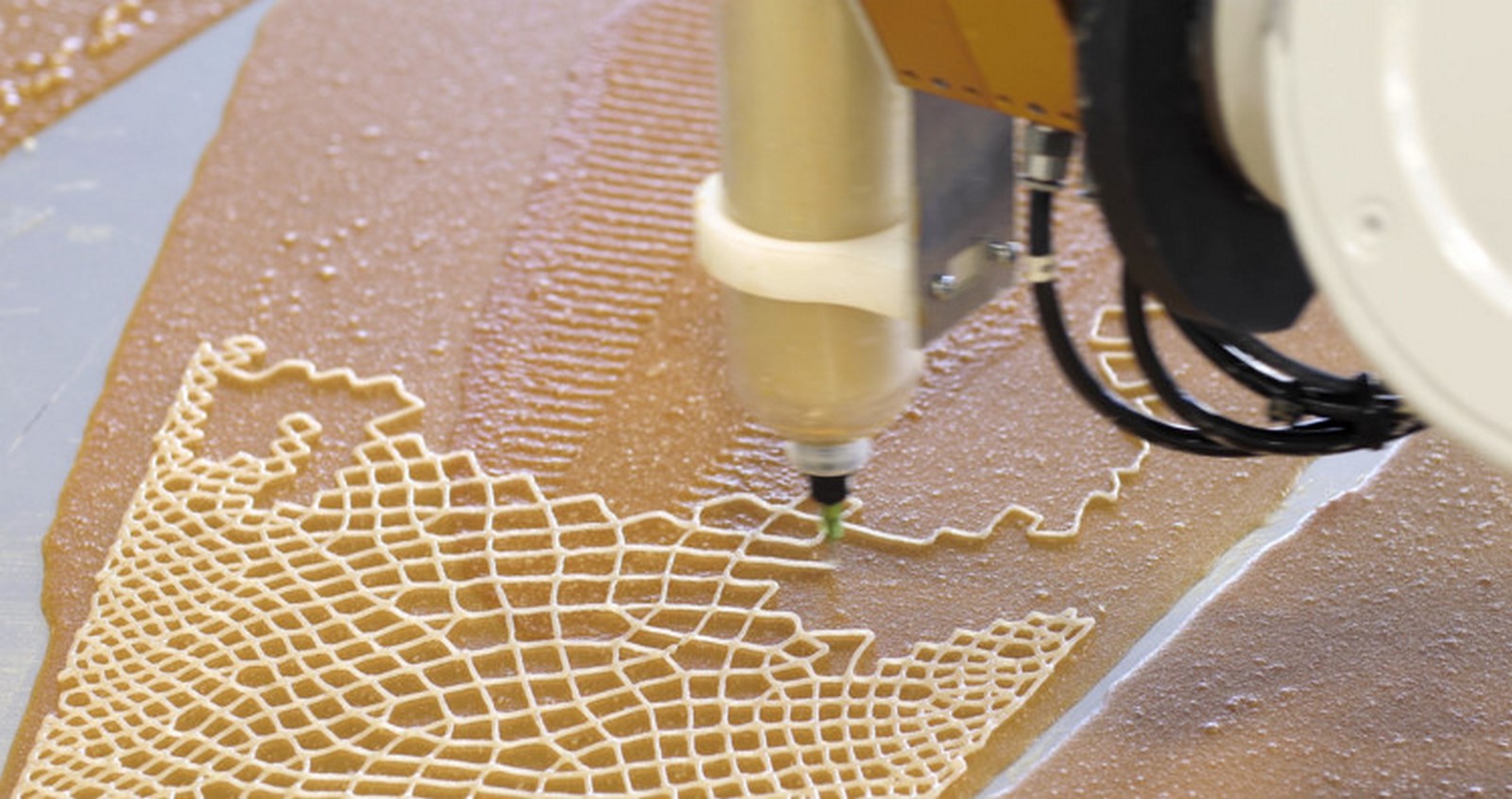Aguahoja (1 – 3)
Contributors: Neri Oxman & MIT Mediated Matter Group
2018 – 2021

The project I have chosen is the Aguahoja collection (Aguahoja 1 & Aguahoja 2) by the Mediated Matter Group at MIT which are a series of pavilions and associated artifacts made from digitally fabricated biodegradable composites (ie. a cellulose-chitosan-pectin-calcium carbonate compound.
After use, these ‘structural skins’ can be programmed to degrade in water in a process called “environmental programming”.

What I admire is how ‘self-sufficient’ the project is and how integrally the ‘cradle-to-cradle’ aspect of its design concept were incorporated. The lack of need for a secondary load bearing structure conventionally needed for stability and form is forgone in favour of a material with these features embedded into the molecular structure, giving an unique elegance. I also appreciate the rigor that the researches put into development of their ‘library’ of functional biopolymers, allowing them to develop an extensive range of biocomposites that can respond to different stimuli (temp / heat, humidity, light, etc.).
According to the paper “Flow-based Fabrication: An integrated computational workflow for design and digital additive manufacturing of multifunctional heterogeneously structured objects”, published by the Mediated Matter Group in 2020, their work flow “encodes for, and integrates domain-specific meta-data relating to local, regional and global feature resolution of heterogeneous material organisations.” I interpreted it to mean that they had a mesh-free geometric primitive onto which they associated the material properties and variable flow rates of various water-based materials, and then tested/ demonstrated the physical properties of these simulations with a robot arm and multi-syringe multi nozzle deposition system. This in context of another published paper “Designing a Tree: Fabrication Informed Digital Design and Fabrication of Hierarchical Structures” implies that the biomolecules of these biomaterials are deliberately chosen to “maximize desired basic-to-acidic and hydrophobic-to-hydrophilic transitions”, while “decay maps” show the degradation of the material over time in relation to various environmental factors. Clearly, a lot of categorization and material mapping occurs on the nano scale, followed most likely by an optimization algorithm (potentially a Machine Learning program) that determines an optimal molecular organisation to be fed into robot arm & multi nozzle deposition system depending on the environmental parameters encoded for.

Robot arm depositing composite material fibers
Arguably, this is a manifestation of the “Form Follows Function” creed where an artifact/ structure’s physical form emerges as result of the functions it has to serve. This is supported by the quote “The Aguahoja 1 platform is… where shape and material composition are directly informed by physical properties (eg. stiffness and opacity), environmental conditions (eg. load, temperature, and relative humidity) and fabrication constraints (eg. degrees-of-freedom, arm, speed, and nozzle pressure), among others.” Thus, it is inferred that any artistic sensibilities exhibited by the work were encoded via the prioritization and curation of specific environmental & physical factors.
Links:
https://www.media.mit.edu/projects/aguahoja/overview/
https://www.media.mit.edu/projects/aguahoja-iii/overview/
https://web.archive.org/web/20211015194534/https://mediatedmattergroup.com/publications-2-1/2018/10/16/designing-a-tree-fabrication-informed-digital-design-and-fabrication-of-hierarchical-structures
https://web.archive.org/web/20211015184725/https://mediatedmattergroup.com/publications-1/2018/10/7/flow-based-fabrication-an-integrated-computational-workflow-for-design-and-digital-additive-manufacturing-of-multifunctional-heterogeneously-structured-objects
![[OLD SEMESTER] 15-104 • Introduction to Computing for Creative Practice](https://courses.ideate.cmu.edu/15-104/f2022/wp-content/uploads/2023/09/stop-banner.png)